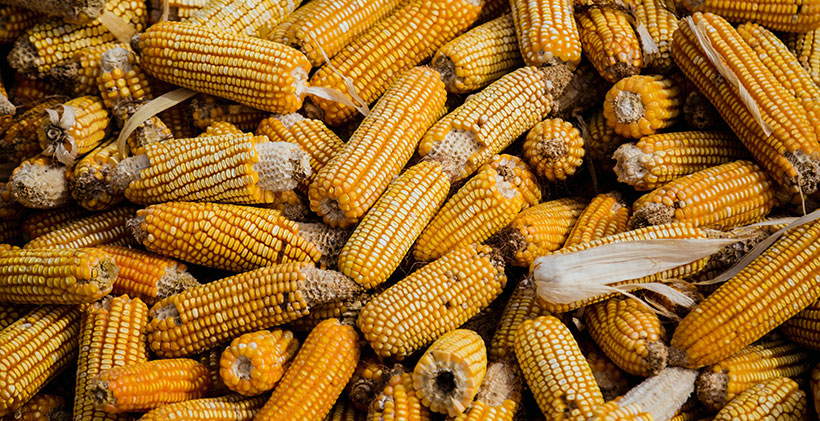According to the Food and Agriculture Organization, about 45% (roughly 1.3 billion tons) of harvested fruits, vegetables, roots, and tubers are lost annually. These food losses and waste are mainly at the postharvest level of the food supply chain. Postharvest losses encompass losses involving agricultural products from the moment crops are ready for harvest or after harvest. These losses may involve a loss in quantity over time or quality losses of important nutrients and may be due to contamination by mycotoxins, for example.
Although loss of quantity and quality can occur at any link in the postharvest chain, in sub-Saharan Africa, estimated postharvest losses of fresh produce occur between production and retail sites. Sadly, these losses are caused by certain socioeconomic factors. They include inadequate marketing systems, inadequate transportation facilities, government regulations and legislations, lack of tools and equipment, lack of information and poor maintenance facilities.
Why do we need to invest in reducing postharvest losses?
Doing so will increase food availability thereby improving food security. Second, the adverse health effects when contaminated food is consumed will be averted, improving food safety. Third, unnecessary resource use will be reduced such as land, fertilizers, pesticides, fuel and water. Lastly, it will enable profit increment for actors (smallholder farmers and agribusinesses) in the food value chain.
The nature of postharvest deterioration can be attributed to physiological changes such as ethylene production, compositional changes, water stress, chilling injury, sprouting and rooting. Losses may sometimes result from physical damage caused by the weather, insects, birds, rodents and farm implements.
Postharvest deterioration may also be due to chemical injury and to a greater extent, pathological decay. Postharvest diseases significantly reduce the shelf-life of harvested fruits, vegetables, cereals, legumes, roots and tubers in sub-Saharan Africa. For example, the fungus Aspergillus spp. affects grains such as maize and produce mycotoxins (aflatoxins) which pose health risks to humans and animals. Some Fusarium spp. which produce mycotoxins are also postharvest pathogens of cereals, root and tuber crops.
Since the most critical factor that affects the development of storage fungi is moisture, control measures include maintenance of grains at low moisture content and/or temperature. Besides protecting grains from insect damage, chemical fumigation with methyl bromide or phosphine has been the practice. Moreover, the use of natural pesticides such as plant extracts and essential oils is being explored by farmers. In some cases, hermetic storage has been employed which entails the use of metallic silos or Purdue improved cowpea storage (PICS) bags.
Due to the toxicological risk of residual chemicals in food products, their application in the postharvest period has been limited. The increasing relevance of food and environmental problems, as well as growing demand for energy conservation through natural “green” technologies and organic products, would make it highly desirable to have an approach to the reduction of postharvest food losses that is efficient, environmentally friendly, and bio-safe.
Natural microbial antagonists such as bacteria which are present on fruits and vegetables may be suppressing fungal growth. On the other hand, artificially introduced microbial antagonists such as yeasts, fungi and bacteria (Pseudomonas and Bacillus spp.) can also be used to suppress fungal growth. These microbes are known to act by competing for space or nutrients, production of antibiotics and/or volatiles, direct parasitism and via induced resistance.
In promoting the use of bio-safe microbial antagonists, two successful examples readily come to mind: one applied in sub-Saharan Africa and the other in the United States. In partnership with the International Institute of Tropical Agriculture (IITA) and the United States Department of Agriculture Agricultural Research Service (USDA-ARS), Aflasafe® was developed based on atoxigenic strains of Aspergillus flavus to control aflatoxin produced by Aspergillus flavus. Furthermore, two commercial formulations of Pseudomonas named Bio-Save 10 LP and Bio-Save 11 LP, contain Pseudomonas syringae strains ESC-10 and ESC-11, respectively. These products are applied in packing houses to prevent postharvest fungal diseases during storage of citrus, pome, stone fruits, and potatoes.
Biological control products based on beneficial strains could be considered as a research-led alternative to chemicals and/or food preservatives in the control of postharvest diseases. Considering the leading success stories in sub-Saharan Africa such as Aflasafe®, there is room for the discovery and application of more of these “green” and safe technologies in the biocontrol of postharvest diseases.
About the author
Feyisara Eyiwumi Oni is a postdoctoral scientist in the field of microbial natural products, plant pathology and microbiology at Ghent University, Belgium. She is also a senior lecturer (adjunct) at the Unit of Environmental Sciences and Management of North-West University, South Africa. Feyi specializes in the characterization of Pseudomonas cyclic lipopeptides from diverse sources and their application in the biological control of plant pathogens. Besides the supervision of graduate students, she regularly attends conferences where she presents research results and engages in networking. Feyi is an Ambassador for the NextGen Plant Science Network, a global community of early career professionals and students in plant science, supported by CropLife International. She is a strong believer in the integrated use of natural products-derived biologicals in agriculture. Feyi enjoys singing and writing opinion pieces.



No Comments